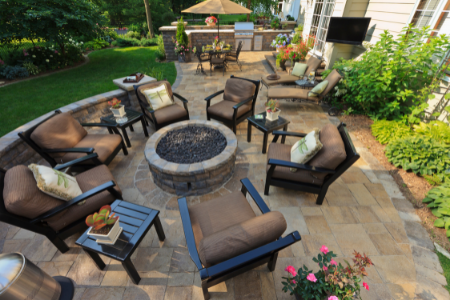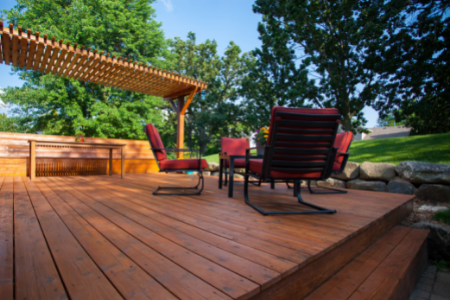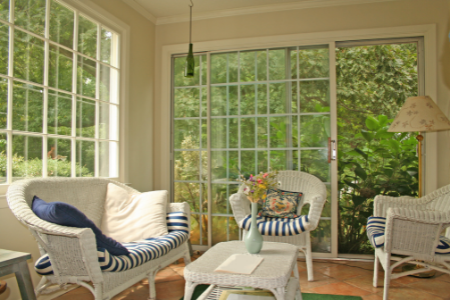
A porch and a patio are two popular house structures that serve similar functions but are built differently. Discover the differences between outdoor areas and which one is ideal for your home. You can also visit MCGdecks for more information.
The Differences Between a Porch and a Patio
Essentially, a porch and a patio are two types of housing additions that differ in a few ways:
Attachment: A patio is often an exposed, detachable landscape design element positioned at ground level at the back of a house, whereas a porch is an attached element located at ground level in the front of a house.
Shared Elements: Patios are not part of the home’s design or structure; thus, they are shared. They don’t have to share the same flooring, paint color, or other interior aspects as porches.
Covering: A patio is a paved surface with no covering, whereas a porch is generally attached to a house’s outer wall and is covered by a roof.
Four Factors to Consider When Choosing Between a Porch and a Patio
When deciding between a porch and a patio, consider the following factors:
Climate: The weather is an important element in the porch vs. patio discussion. Patios are open outdoor spaces that are unlikely to be used much during the winter. Porches can be open or closed, depending on the type of porch. However, screens or windows can make them useable all year round.
Cost: When deciding between a porch and a patio, the cost is an important factor to consider. Even a simple wooden porch will require expert installation, which will increase the cost of materials and labor, as well as special features like wood flooring.
Patios are less expensive and easier to install. Therefore, many homeowners tackle them as a do-it-yourself project. Porches and patios can both increase the value of your home when it goes up for sale.
Entertainment: Your choice of porch or patio may be influenced by how you entertain guests. Porches are typically open and in the front of the house, providing minimal seclusion. Porches are more useful for small social events than for larger parties in terms of functionality. Patios are usually found at the back of the house, where they provide more privacy for large parties.
Space: Your choice of porch or patio will be influenced by the amount of space available in your front or backyards. In a small backyard, a patio will make homeowners feel claustrophobic and may overshadow other landscape design elements. A porch in a small front yard, on the other hand, may make you feel like you’re on display to your neighborhood.
Five Types of Other Outdoor Living Spaces
Aside from a porch or patio, there are other outdoor living spaces to consider. Among the most popular options are:
Covered Patio: A covered patio is an outdoor facility with open sides that offers shade or protection from the weather. It can be attached to a house or stand-alone. Pergolas, arbors, and pavilions are three common types of shaded patios.
An arbor is a covered vertical construction that landscape designers place on walks, paths, or entrances as a garden accent. A pergola is a free-standing design with columns and a lattice roof. Furthermore, a pavilion is a free-standing patio with columns supporting it.

Deck: This is a wooden building that does not have a roof or any other covering. A deck, unlike a patio or porch, can be built on any part of the house and requires very little maintenance. Railings are required by many construction standards for decks with a height of more than two feet.
Gazebo: A gazebo is a free-standing outdoor building that has a roof and partially open sides that can be closed off with screens. They are typically octagonal or oval in shape and sit atop a concrete or wooden base.

Sunroom: A sunroom is an enclosed space with numerous windows that allows for more sun exposure. Sunrooms, like rear porches, are frequently attached to the back of a house but, because they are entirely closed, they give more protection from the weather.
Verandah: A verandah, also known as a veranda, is a ground-level open porch that stretches beyond the front or rear of a house. Railings are usually found on verandahs that are built around one side of a house. Sometimes, the name “verandah” is used interchangeably with other patio coverings, such as pergolas.
Wrapping It Up
Do you have a better understanding of the differences between the two — porch vs. patio — now? Porches are often raised off the ground, attached to the house as additional living space, and roofed. Patios, on the other hand, are normally on the ground level, paved, and open to the weather.
We hope this information is useful, and if you’re looking for a company to build a porch or patio for your home, look no further than MGCdecks. It’s the best on the market.
